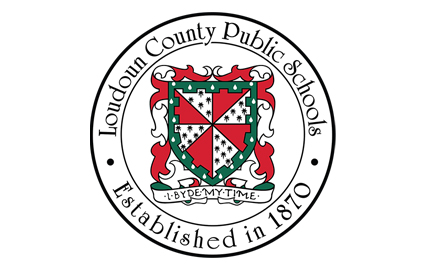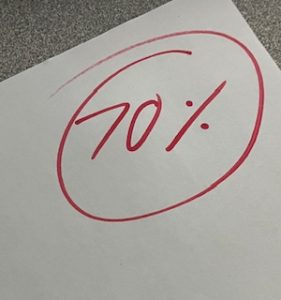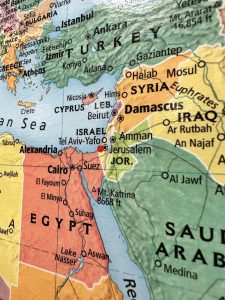School Board policy on re-opening of schools, students express viewpoints

November 30, 2020
On Nov. 10, the School Board voted that Stage 3 would start on Dec. 1, allowing those who selected hybrid learning for the first semester and are either in grades 3-5 or who are seniors attending the Academy of Science or Academy of Engineering and Technology, to enter a hybrid classroom. Stage 4 was approved to start on Jan. 21, when students in grades 6-12 can receive 2 days of in-person teaching and 2 days of synchronous virtual teaching, if the hybrid option was selected on the most recent parent survey.
However, on Nov. 17, the School Board also approved the use of metrics to track COVID-19 spread, a determining factor in the transition to hybrid learning. If the number of cases surpasses 200 per 100,000 people in a 14-day period, and the rate of positive RT-PCR tests over 14 days is above 10%, then all students will return to 100% distance learning, and implementation of the hybrid model would not progress. According to data retrieved on Nov. 30, in the past 2 weeks there has been a total of 283.9 cases per 100,000 and the rate of positive RT-PCR tests is below the threshold at 7.6%.
With education at a crossroads, students and teachers find themselves at one as well. The decision to pursue distance or hybrid learning is one that students had to face with the release of the fall survey, which ended on Nov. 20.
Sophomore Emmaline Fontanilla is opting for 100% distance next semester, largely due to her external commitments.
“I dance 6 days a week so if I was exposed to COVID at school I would be unable to attend dance in person for two weeks,” Fontanilla said. “I also have a job which I wouldn’t be able to go to if I was exposed.”
Although Fontanilla notes that distance learning isn’t ideal, she finds that her teachers have given her all the time and resources she needs to succeed in the virtual environment.
“I think this last quarter was a lot more successful than the distance learning in the spring,” she said. “I understood material better, and I think everything was organized better last quarter.”
Similar sentiments about virtual learning were echoed by Arya Tadepalli, a senior who attends the Academy of Science. Tadepalli also chose distance learning for 2nd semester, primarily to safeguard her family’s health. She finds that her education at AOS helped equip her for virtual learning.
“AOS really uses hands-on learning environments and a great deal of collaboration, but it also taught me to learn independently, which I think really helped me in distance learning,” Tadepalli said.
However, Tadepalli also is contending with classes such as AP Chemistry, which rely heavily on laboratory experience.
“For my research classes and AP chemistry class I really miss being able to conduct labs, but my teachers have done their best to provide virtual labs for us to explore,” she said.
One hallmark of attending AOS is conducting a research project. Tadepalli’s project centers on synthesizing a membrane for the purpose of carbon sequestration. However, with virtual learning in place, she and her partner were faced with obstacles.
“We ran into some roadblocks for the project in the beginning and things were just starting to work when in-person school ended,” she said.
Due to this, Tadepalli wanted to pursue hybrid learning for just a month, in order to continue the interrupted progress on her research.
“I wish there was an option to change to hybrid for the first semester because that would be a month of being in school and I could make some progress on my project in that time before everyone else gets to enter the building,” she said.
For sophomore Caroline Northedge, this is her first year at the Academies of Loudoun. She has been a hybrid student since the start of 1st semester, overcoming some initial hesitation.
“My first day went well though, and I was pleased with how serious the students and staff were taking the safety rules,” Northedge said. “I became used to the changes after a few weeks, and now I can’t really imagine the school without them.”
However, Northedge notes that hybrid learning doesn’t equate to the accustomed sense of collaboration.
“I think there was a little disconnect between the course material and the students because we didn’t get to learn in depth by working together or doing any sort of group projects,” she said.
As hybrid learning progresses, Northedge hopes to learn in ways that differ from solely textbook readings and unit tests.
“I am hoping for maybe more project-like assignments that can help me understand the material more, but I know that is difficult to achieve with the pandemic,” she said.
Despite the restrictions, Northedge notes that the current system is allowing her to learn a lot of information. As a hybrid student, she is also witness to an unprecedented school atmosphere.
“Most of the time hallways are really empty and the school is quiet, also students can’t use the places around the school for studying or presenting because of safety reasons,” she said. “It feels a bit post-apocalyptic, I hope the school returns to it’s usually lively nature one day.”
For senior Kate Brennan, the hybrid option also was appealing in the summer. However, her sentiments shifted, leading her to opt for distance learning in 2nd semester.
“I definitely would prefer to be at school, but in order for me to have a last basketball season and to keep my family safe, I made the decision to stay online and limit exposure,” Brennan said.
As an athlete, Brennan notes that although she understands the interest in pursuing hybrid learning, it might compromise the continuity of sports.
“If only some of the athletes on a team choose to do hybrid and the others choose distance, then those who wanted to stay safer and do distance will automatically be more at risk, despite not choosing to go to school,” Brennan said.
Brennan finds that virtual learning has not significantly impeded her ability to pursue sports. However, she finds that responses may vary.
“I wouldn’t really say that virtual learning has made it more difficult for me to pursue my athletics personally, but I know that it has definitely been harder for people with high risk family members,” she said.
Daniel Loper, who specializes in special education teaching, is currently teaching geospatial science, honors physics and conceptual physics. He teaches hybrid classes for the first half of one A day, and is anticipating teaching hybrid for the first half of both A days starting Dec. 1.
Similar to the survey that students recently had to take regarding their decision to do hybrid or distance learning, Loper was also confronted with this choice in the summer. He notes that he felt prepared to teach his students in person due to his consideration for his students’ needs, regardless of whether they required special education services or not.
Currently, the geospatial science class is taught by both Loper and Taryn Langmead. The class consists of dual enrollment and academic students, most of whom are learning through their screens, with the exception of 2 students who receive in-person instruction. Loper says that his main purpose is making sure that all of his students are progressing and are given the support to navigate the difficulties and divides that the current learning models may cause.
“One of the things that I really try and consider almost on a daily basis is how can the student not fall further behind because of the situation they’re in,” Loper said.
To fulfill this purpose, a network of parents and colleagues are coming together to figure out ways to better follow up with the students. Loper notes that parents oftentimes have many other commitments, so he greatly values their involvement.
Amidst the planning and teacher development, Loper notes one major challenge that hybrid learning poses.
“For the students that are in the classroom, it’s actually in some ways more challenging, because we want to make sure that we give those students a break from wearing their mask constantly,” Loper said.
The necessity for a complete disconnect from teaching also affects the students’ time and routine.
“It’s not just, okay, we’re going to go outside, take a five minute break. It’s okay, we’re going to break away, go away and come back,” Loper said. “Now you’ve got to get kind of reacclimated back into the environment you’re in.”
Despite this challenge, Loper believes that if one considers only the students who are currently hybrid learners, in-person teaching could be said to be beneficial for those students. However, no assumptions about the advantages of hybrid learning can be made as of now.
“There’s not many students in the school right now, so that’s the reason why I say I think the jury’s kind of still out,” Loper said. “It’s too small of a sample size.”






